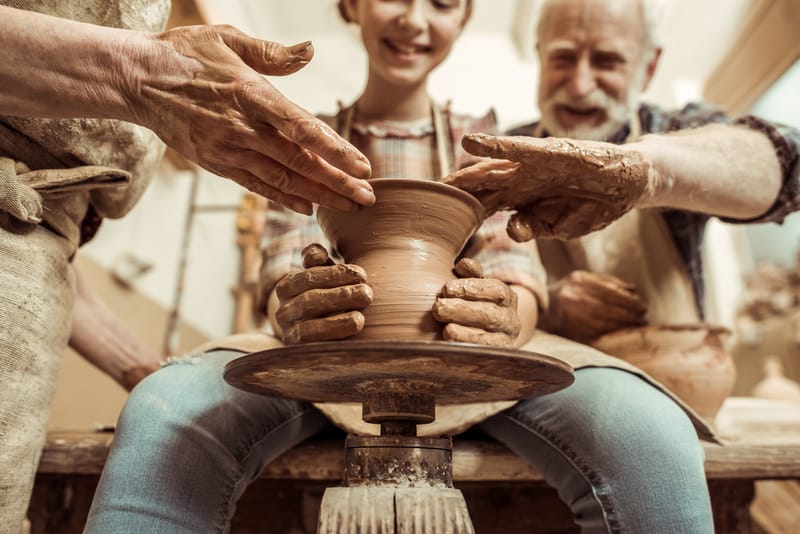Nasal polyps are a chronic disease due to long-term inflammatory reaction of the nasal mucosa and causing tissue edema. Mostly seen in adults, with a predilection for ages 30-60 years and a high prevalence in men.
According to Traditional Chinese Medicine, nasal polyps occur because of warmth and heat hidden in the lung and congestion reaction in the nasal orifices. Acupressure points for nasal polyps help improve clinical symptoms, enhance blood circulation, reduce nasal mucus congestion, and prevent recurring nasal polyps by stimulating the local nerves and achieving the effect of relaxing the tensor and meridians.
What Are Nasal Polyps?
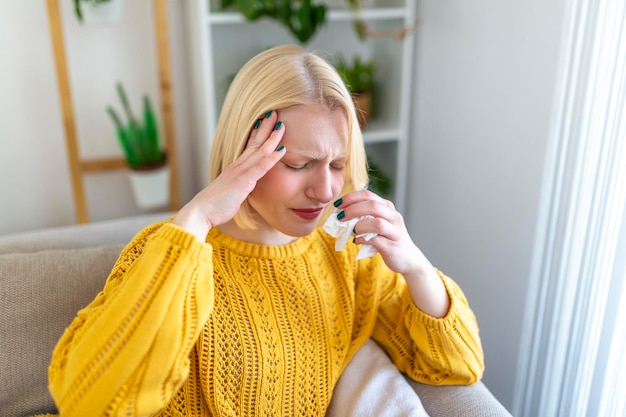
Nasal polyps are soft and non-sensory, so you might not be aware if they are small. However, multiple growths or large polyps will block the nasal passages and sinuses. Polyps can grow larger and larger if untreated and even cause headaches and excessive nasal sounds when speaking, which can greatly affect the patient’s daily life.
Common signs and symptoms of chronic sinusitis with nasal polyps include runny nose, persistent nasal congestion, postnasal drip, reduced or absent sense of smell, loss of sense or taste, facial pain or headache and snoring, and frequent nosebleeds.
What Is The Cause Of Nasal Polyps?
Nasal polyps belong to the category of “Nasal Hemorrhoids”, and often present as a complication of nasal abscess and congested nose. According to Traditional Chinese Medicine, nasal polyps occur because of warmth and heat hidden in the lung and congestion reaction in the nasal orifices.
The main factor is eating habits. Too much spicy, hot and greasy food will increase dampness and heat in the body, which can heat up the lung and stomach and causes stagnate in the nasal.
When damping heat is stored in the nasal for a long time and left untreated, it will weaken the strength of the lung. Airflow of the lung is not allowed to promote. Dampness heat accumulates and congests the nasal cavity.
Stimulating acupressure points for nasal polyps can also help improve one’s body condition, smooth circulation and clear out the dampness heat from the lungs.
Does Acupuncture Really Help For Nasal Polyps?
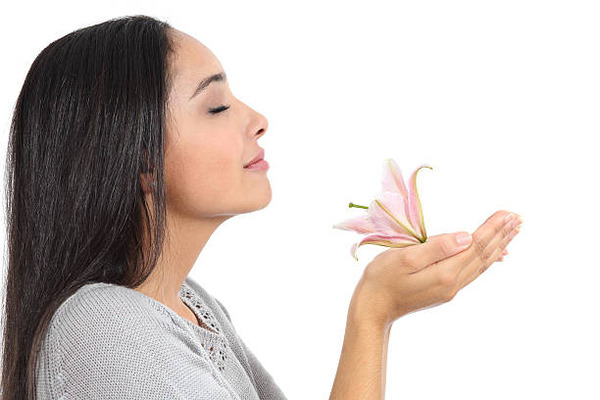
Acupressure treatment is mainly aimed at postoperative problems of nasal polyps, such as recurrence or adverse effects caused by improper cleaning. Nasal Polyps acupuncture treatment plays an important role in the speedy recovery of the normal function of the nasal cavity. It also helps improve the cure rate and reduce the postoperative recurrence rate.
A case report published in June 2010 found that using acupuncture and herbal medicine as an alternative method can prevent nasal polyps from recurring and not occurring for a few years. Large amounts of mucus disappeared. The recurrence of nasal polyps was effectively prevented.
On the one hand, there also study shows the treatment of nasal constipation with herbal tonics and acupuncture can help eliminate nasal polyps, improve olfactory function, and improve immunity.
Many patients fear surgery and choose Traditional Chinese Medicine as an alternative nasal polyps treatment because there is a certain chance of recurrence after surgery.
Traditional Chinese Medicine has great advantages in improving clinical symptoms and preventing recurrence. Therefore, we are going to introduce some useful acupressure points for nasal polyps today.
What Are The Acupressure Points For Nasal Polyps?
During the process of reviewing the literature, we found that stimulating several special points have a better preventive and therapeutic effect on nasal polyps.
Acupoint: EM-7 (Other Names: Bi Tong)
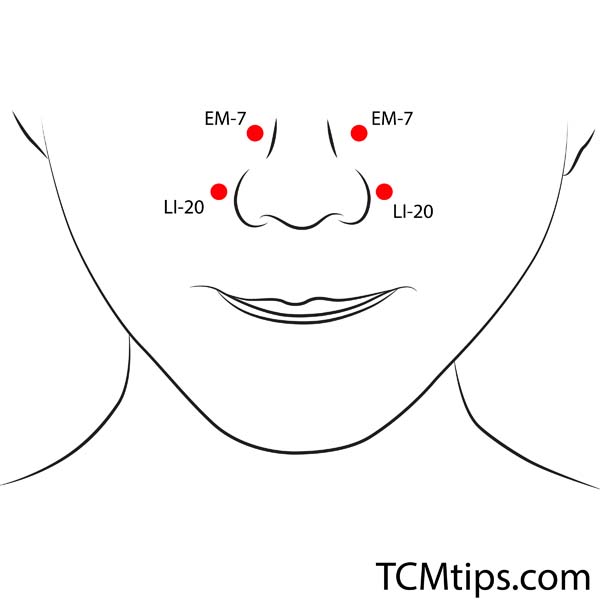
No matter what kind or symptoms of nasal disease are, EM-7 point is always a must, mostly used in acupressure for sinus inflammation. It lies in the middle of both sides of the nose at the junction of the nasal bone, one on each side.
Massaging the EM-7 acupoint has significant preventive effects on many respiratory illnesses and is very easy to follow. Using fingertips of the index finger in the left and right direction to stimulate effectively, 1 minute each time.
Drinking a cup of hot water after the massage is a plus, especially for people with serious rhinitis. Before pressing EM-7, rub your hands together to warm up, then rub your nose to activate it and press the point like above.
Acupoint: LI-20 (Other Names: Large Intestine-20/Ying Xiang/Welcome Fragrance)


“Ying Xiang”, also known as “Welcome Fragrance” in English. The name of this point means that this point receives the Qi and blood supplied by the stomach meridian. It is often used to treat rhinitis, sinusitis, runny nose and nasal congestion. Due to its ability of reduce congestion and inflammation of the nose, the use of LI-20 to acupuncture for hay fever is a plus.
This point is located at the midpoint of the outer edge of the nose, 0.5 cun on either side of the nostril.
Acupoint: EM-2 (Other Names: Yin Tang/Hall of Impression)
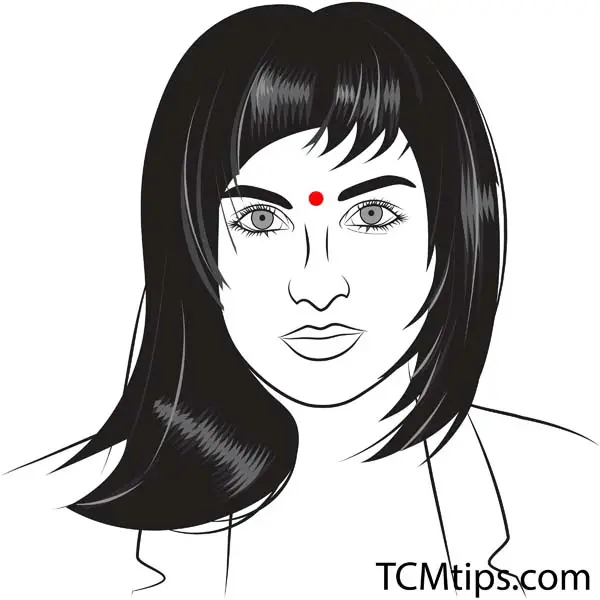
EM-2 point is located on the face and at the intersection of the line between two eye browns.
It is often used in acupressure for sinus infection. Regular stimulation on this acupressure point can make the sense of smell sensitive, and also prevent colds and respiratory diseases.
Acupoint: GV-23 (Other Names: The Governing Vessel-23/Shang Xing/Upper Star)

The GV-23, also known as Du, is located 1 cun straight up from the middle of the front hairline. It constricts the blood vessels of the nasal mucosa and is an important point in the treatment of nasal diseases. Mostly used clinically to treat running nose, stuffy nose, nasal congestion, nosebleeds, headache, and eye pain.
Acupoint: ST-3 (Other Names: Stomach-3/Ju Liao/Large Bone Hole)
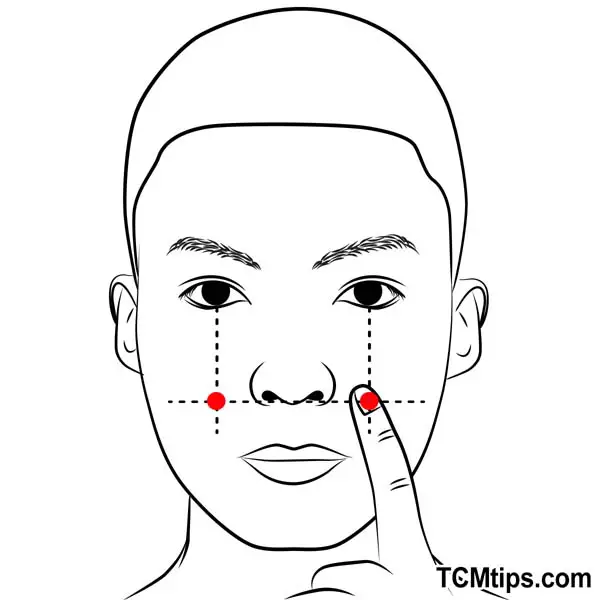
ST-3 is an effective point for nasal congestion. Stimulating this acupoint will help to smooth out the clogged nasal mucus. This point is located on the face of the body, directly below the pupil, at the lower edge of the flat nose, and in the lateral nasolabial groove. It is one of the acupressure points for skin tightening.
Why Should You Use The Acupressure Point For Sinuses?
Sinusitis is the most common chronic disease in otolaryngology. Therefore, using the acupressure point for sinuses to prevent the formation of nasal polyps is strongly recommended.
Long-term inflammatory stimulation can gradually progress to long-term episodes of symptomatic sinusitis, or chronic sinusitis, because of recurrent episodes of acute sinusitis, abnormal nasal structures and nasal polyps.
It leads to swelling and hyperplasia of the mucous membrane of the sinuses and nasal cavity, showing polyps-like changes and eventually foraging nasal polyps. Therefore, once a doctor finds nasal polyps, he or she will find chronic sinusitis.
Research has indicated that acupuncture at these 3 nasal acupoints can alleviate symptoms and improve quality of life.
Gently kneading the LI-20 point and stimulating the acupressure point is one of the effective methods to unblock congestion in the sinuses. It flattens the outer edge of the nose in the nasolabial folds. Fingers are placed on both sides of the nose, and repeatedly massage the nose from top to bottom for 5 minutes.
Then find EM-7 at the highest point of the nasolabial groove and rub about for 1 minute each time.
Kneading and rubbing the nose can promote blood circulation in the nose and modify blood circulation.
Conclusion
– EM-7 has the effect of stopping sneezing and clearing the nasal. It helps improve symptoms such as congestion and edema of the nasal mucosa.
– EM-2 is used to relieve dry noses and clear the head and eyes to raise the sensitivity in the sense of smell.
– LI-20 is often used to treat rhinitis, nasal congestion, sinusitis running nose, and other nasal diseases by receiving the blood supplied from the stomach meridian.
– GV-23 has the effect of constricting blood vessels of the nasal mucosa and is used in treating dry noses, nosebleeds, and headaches.
-ST-3 is mainly for the head, and facial disorders, as the location determines the treatment. It can be pressed to achieve the effect of soothing the tensor to help to solve dizziness, allergic rhinitis, and sneezing.

Try our Anti-Aging Gua Sha Tool designed to bring out your skin’s natural glow.
Best Gua Sha Product- Anti-Aging: The tool is designed to target 11 specific aging signs such as wrinkles and sagging skin. By following the 7-step routine, users can improve skin firmness and reduce fine lines naturally.
- Enhances Skincare Routine: It works effectively with serums and lotions, boosting absorption and efficacy of skincare products.
- Visible Skin Improvement: Users can expect a smoother complexion, reduced puffiness, and a more youthful appearance.
 P. Sze
P. Sze 



